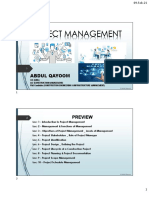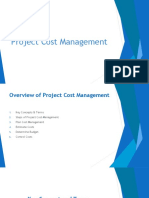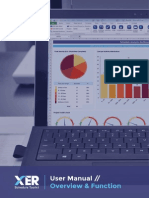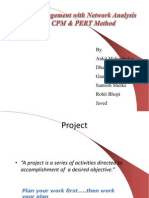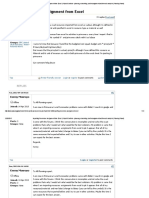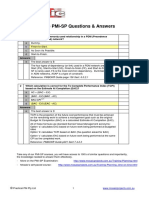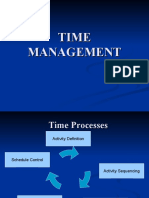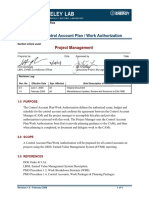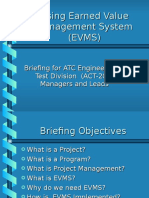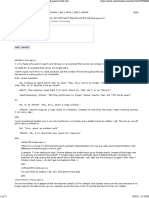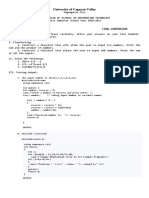Index
Sl. no. THE BASICS 1 2 3 4 5 6 7 Definitions Planning Process Project Scheduling Tools and Techniques used Terminology used Network Diagrams PERT Networks 3 4 5 6 7 8 14 Description Slide No.
THE PRACTICAL ASPECT OF SCHEDULING 8 9 10 How do we start development of a schedule Baselines updation and Tracking How to cope up with a delay 18 19 21
�The Definitions
Project It is a temporary endeavor undertaken to create a unique product or service. Project Planning It is a part of Project Management, which relates to the use of schedules (e.g. Gantt Charts) to plan , report progress and subsequently control the project. project
�The Planning Process
Define Objectives, Project Scope and System Requirements
Define specific work activities
Creation of Project Organization
Preparation of Schedule
Preparation of Budget and Resource plan
Preparation of a plan to review and control work performance
�Project Scheduling It is an integral part of Project Planning which is concerned with the techniques that can be employed to manage the activities that need to be undertaken during the development of a project. Objectives: Completing the project as early as possible by determining the earliest start and finish of each acti it activity Calculating the likelihood a project will be completed within a certain time period Finding the minimum cost schedule needed to complete the project by a g p p j y certain date Investigating the results of possible delays in activitys completion time Progress control Smoothing out resource allocation over the duration of the project
�Tools and techniques used in scheduling
Network N k diagrams Gantt Chart PERT
Milestone Chart
CPM
�Terminology used
Float/ Slack The amount of time an activity can be delayed without delaying the project (total float) the (t t l fl t) or th early start of any successor activity (f l t t f ti it (free fl t) float) Milestone An activity with zero duration which indicates the start or finish of a major task ac y e o du a o c d ca es e s a o s o ajo as Work Breakdown Structure (WBS) The overall project is subdivided into smaller elements called Work Breakdown Structure (WBS) Its purpose is to divide the total project into (WBS). pieces of work called work packages which makes it easier to prepare project schedules, cost estimates and to assign management and task responsibilities p Critical Path It is a sequence of project network activities having zero float. It determines the shortest time possible to complete the project
6
�Network Diagram It is a graphical representation of the project and it consists of a series of activities arranged in a logical sequence and show the interrelationship between the activities. Types: AON(Activity on node) or PDM(Precedence Diagramming method) A
START
D C
F
FINISH
B E G AOA(Activity on Arrow) or ADM(Arrow Diagramming Method) D 2 5 A E H J F B 3 8 1 6 C 4 G I 7
7
�Activity Relationships Finish to Finish (FF) Finish to Start (FS)
Activity A Activity Acti it B
Activity A Activity B y
Start to Finish (SF)
Start to Start (SS) Activity A
Activity A Activity B
Activity B
�Network Analysis
Forward Pass: It gives the earliest expected event times i.e. Early Start (ES) and Early Finish (EF) for each activity.
Backward Pass: It gives the latest allowable event times i.e. Latest Start (LS) a d a es and Latest Finish ( ) for eac ac s (LF) o each activity. y
Total Fl t LS T t l Float = LS- ES =LF- EF LF
�Critical Path Method (CPM)
Forward pass through the network and evaluation of ES & EF
Backward pass through the network and evaluation LS & LF
Float = LS-ES= LF-EF
Identifying Critical Activities and Critical path
10
�90,105 95,110 B 15 0,90 0,90 0 90 A 90 90,115 90,115 90 115 D 25
105,110 110,115 C 5 115,129 115,129 115 129 F 14 129,149 129,149 129 149 G 20
149,170 173,194 H 21 149,177 166,194 166 194 I 28 149,194 149 194 149,194 J 45 194,204 194,204 194 204 K 10
90,120 90 120 119,149 E 30
ES,EF LS,LF Activity name Duration
11
�Interpreting a schedule
The following parameters are essential to interpret a schedule
1.
BL1 Early Start or Early Finish Indicates when the activity should have started or finished BL1 Late Start or Late Finish Indicates maximum extent an activity can be delayed as per original plan Total Float Indicates how much float is available at a particular point in the schedule Free Float Indicates how much float can be actually used Schedule Percentage Complete How much should have been complete Actual Percentage Complete How much is actually complete
2.
3.
4.
5.
6.
�What does the Critical Path mean practically ?
A set of activities that have no float connecting the START node with the FINISH node Longest path of the network The sum of the completion times for the activities on the critical path is the minimal completion time of the project Delay of an activity on the critical path directly impacts the planned project completion date
12
�The Baseline
�Updated Schedule
�Updated Schedule
�Programme Evaluation and Review Technique (PERT)
Use of probabilistic time estimates For non-repetitive jobs (research and development work), where the time and cost estimates tend to be quite uncertain Use of 3 time estimates : Optimistic time (to) : shortest possible time Most likely time (tm) : best estimate of activity time Pessimistic time (tp) : longest time considering all odds Expected time (te) = (to + 4tm + tp) 6 Variance = ((tp to)/6)
2
13
�Gantt chart The Bar or Gantt Chart is used as a visual aid for tracking the progress of project activities Appropriate percentage of a bar is shaded to document the completed work The manager can easily see if the project is progressing on schedule
14
�Milestone Chart A Milestone chart is similar to a Gantt Chart with the emphasis placed on task completion Milestones allow project management to much more accurately determine whether or not the project is on schedule
14
�PRACTICAL ASPECT OF SCHEDULE DEVELOPMENT
�How do we start development of a Schedule
Fixing the milestones It is very important that the activities are maintained within the milestone dates These may be based on expert advise , thumb rule or any previous project If LOI has been issued or the contract has been signed already then these dates should be taken into consideration If owner approved vendor schedules are available then dates prescribed herein may also be used Package Philosophy of the project should be frozen Details on various packages should be available at your disposal Any interfaces within the packages should be noted down , since these may be critical in package interfacing in the schedule Scope and WBS Develop the Work Break Down Structure as desired and well within in the scope that has been frozen Scope of the p j p project should be understood well before one starts scheduling g WBS should be further broken down into smaller activities with tentative durations Activities should belong to 3 basic areas viz Engineering , Procurement and Construction Load the resources required for each activity individually Revisions and Comments R i i dC t Schedule should be further refined based on comments from all the package owners Comments should be sent to all the concerned personnel via an official mail Received comments should be incorporated wherever applicable , else the reasons for not incorporating the comments should be given in a comment sheet
�Baseline , Updation and Tracking
Baseline Development and Updation Once the schedule is developed it should be frozen into a baseline Based on the project p g p j progress the schedule should be updated p Updation should be done either weekly or monthly based on the requirement Tracking the schedule Check for the critical path Note the activities wherein zero or negative floats exists Check if the milestone dates or the project end dates have moved
�Information source for updation
Major Information sources
Approved vendor reports Updated Approved schedules from the vendor Consultant reports on drawings and documents Vendor manufacturing data Package owner inputs Inputs from project owner
Vendor Reports Vendor reports are essential inputs for the updation process Standard report formats should be prescribed in the contract document Contact persons should be detailed out in the Co-ordination Procedure Vendor reports should be commented upon receipt and clarifications sought Vendor reports should at least contain the Engineering , Procurement and Construction data Reports have to be submitted at least on monthly basis
�How to cope up with a Delay ?
The Critical Activity An activity is said to be delayed when it consumes all float available to it Activity with zero float is a critical activity Any delay here can affect the project schedule Delay Analysis and Solution L k f the l Look for h last activity of the schedule and track the D i of the activity i i f h h d l d k h Driver f h i i Check if the driver has adequate float to crash the duration Try to reduce dependency of the particular activity by using a different sequence of execution Check if the resources can be increased to reduce the duration of an activity
�Final thought on scheduling
Schedule predictions will be accurate only when all the personnel involved in the project contribute to development and updation process Schedule development should be started at Level 1 (L1) and further drilled down to other detailed levels like L2 , L3 , L4 etc. this results in a more precise and accurate schedule development L1 dates may not be very accurate but the milestones should lie within the limits defined by LOIs or contracts available Schedules submitted by the contractors in later stages may be within limits defined by the L1 schedule
16




